Chances are good that, like many guitarists,
you suffer from Gear Acquisition
Syndrome and lust after every cool new
stompbox that hits the market or appears
on the forums. A side effect of this disease
is a pedalboard that looks like an overflowing
bowl of M&Ms, with brightly colored
effects spilling out over the edges and
onto the floor. If this describes your plight
(it certainly does mine), you’ll welcome the
new line of ultra-compact effects designed
by Lovepedal’s Sean Michael.
Each stompbox comes in a rugged, diecast
aluminum case that measures 1 1/2"
x 3 5/8" x 1 1/4". Yeah, you read it right—
that’s roughly half the size of an MXR
Dyna Comp. Of course, this leaves room
for only one knob per pedal—along with
audio input and output, a 9-volt DC input,
one or two LEDs, and the odd mini toggle.
Michael has come up with a variety of
approaches to the control issue, while continuing
to focus on the stellar sound that
has helped establish his reputation in the
stompbox community.
We checked out four flavors of these little
morsels, so read on as we throw down the
lowdown. I tested these pedals with a 1965 Stratocaster loaded with DiMarzio Virtual
Vintage pickups and a Reverend Reeves
Gabrels model played through an Orange
Tiny Terror and an Egnater Rebel 30.
Echo Baby
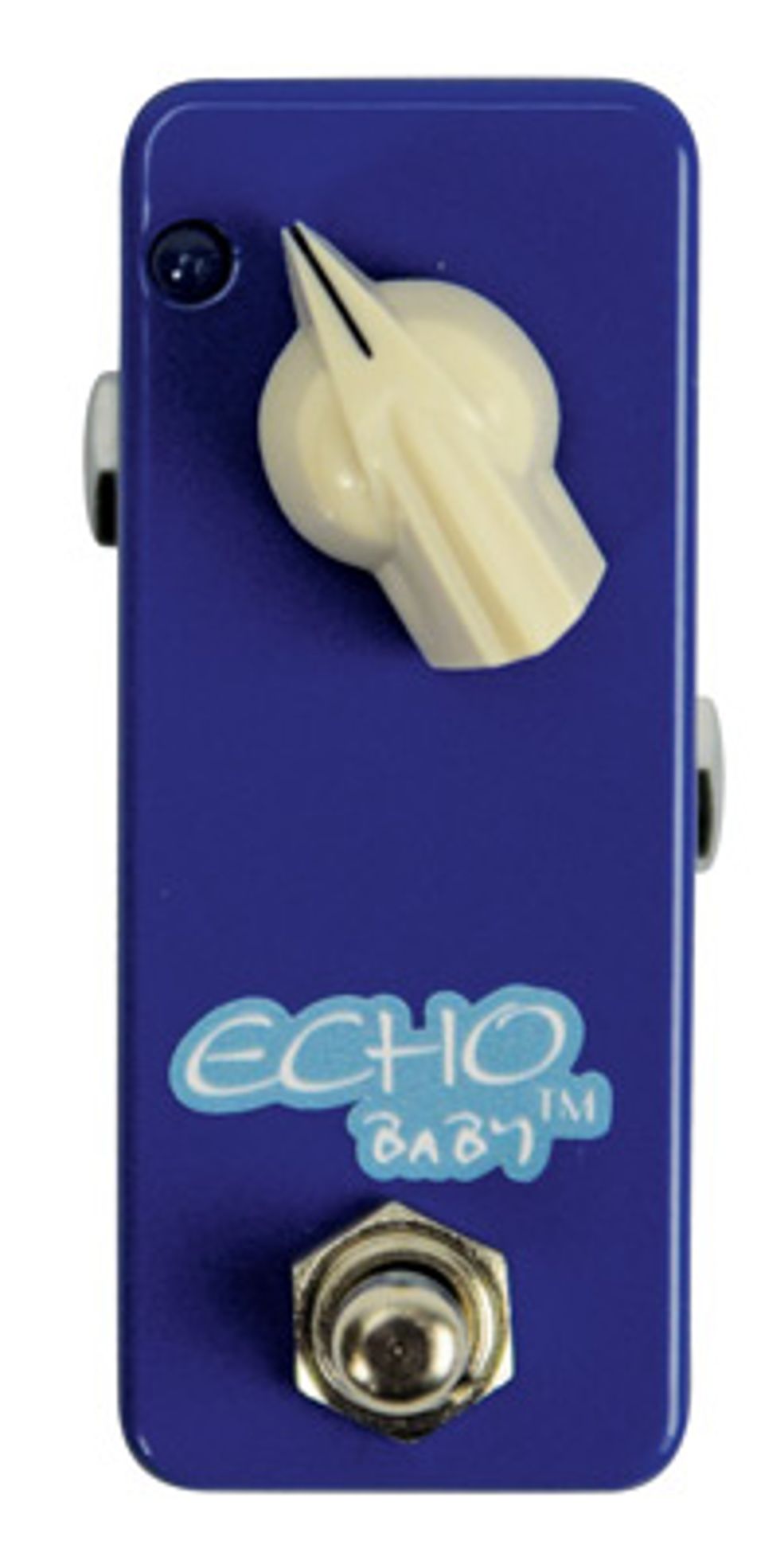 | |
| Download Example 1 | |
The bright blue Echo Baby offers up 760ms
of delay. Delay effects usually come with
a host of controls, including blend, time,
feedback, modulation depth and speed, and
tap tempo, so how do you make a delay
pedal with only one knob? Lovepedal has
assigned that knob to control the length of
the delay time, adding two trim pots accessible
with a small screwdriver through holes
on the bottom of the pedal for adjusting
the feedback and dry/wet blend.
In addition to delay, the Echo Baby offers
modulation. To set the amount of modulation,
you hold down the footswitch switch
for two seconds and then twist the pedal’s
chicken-head knob. Once you’ve set the
modulation amount, the pedal automatically
adjusts the modulation speed and
depth according to the chosen “time”
setting—that is, as you decrease the delay
time, the modulation speed and depth
increase slightly.
Unless I wanted a sick warble at longer
delay times, I found a relatively low modulation
amount suited my tastes. At this minimal
setting, the pitch waver adds a simulated
analog-tape flutter to the echoes in
both long and short delay settings. If you
don’t want modulation, you can shut it off
by holding the footswitch for two seconds
and turning the knob all the way down.
The Final Mojo
I didn’t plan on getting out my little screwdriver
in the middle of a gig to change the
delay amount or feedback, so I set the unit
for just a couple of repeats occurring well
below the original signal. With the delay
set on the short side, the Echo Baby created
a reverb simulation that added warm
depth to my Strat through the reverb-less
Tiny Terror. Longer delay settings added
a subtle sustaining tail to the notes. For
me, this setting offers the maximum bang
for the buck. It also allows you to dedicate
another more-programmable or fully controllable
delay to ambient or heavier slapback
effects. However you choose to set
up and use the Echo Baby, it will deliver
gorgeous sounding, studio-quality delay.
Buy if...
you want a small-footprint delay that offers great analog-style sound.
Skip if...
you need full control at your fingertips.
Rating...
Street $219 - Lovepedal Custom Effects - lovepedal.com |
Babyface Tremolo
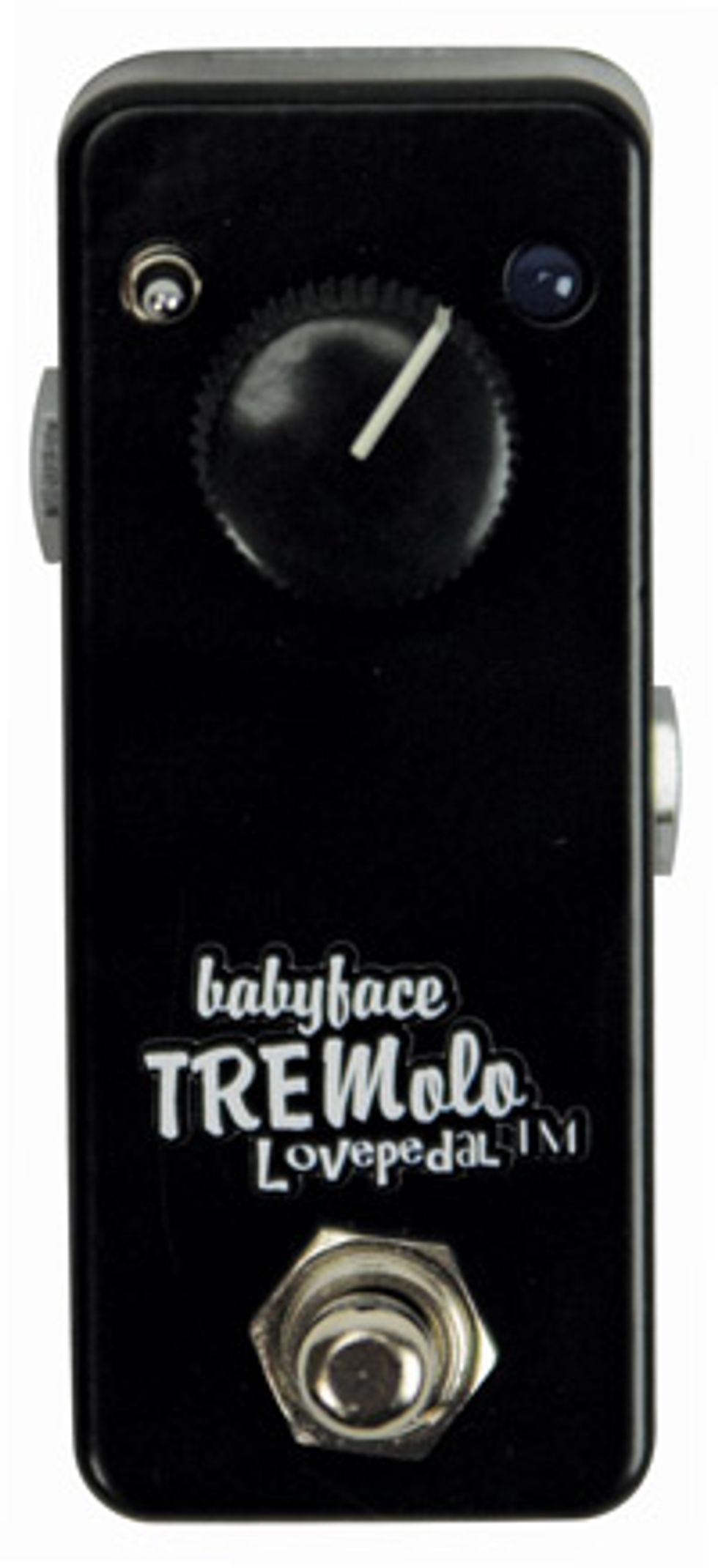 | |
| Download Example 1 | |
Tremolo replaced chorus as my modulator of
choice quite a while ago—sorry, maybe it’s
my roots-music upbringing or the fact that
something about chorus screams “last millennium”
to me. The lone knob on this tremolo
pedal controls the rate—from extremely slow to near-ring-modulation ping. A mini
toggle lets you choose between the opto
sound (sine wave) of a blackface amplifier, a
sawtooth wave that recalls the tremolo of an
Ampeg amp, and a full square wave, which is
suitable for stutter and chopper effects.
To access the Babyface’s depth and volume
trim pots, you need to remove four screws
and the back panel. Though Michael says
he is considering drilling a hole to allow
quicker depth adjustment, ultimately
you’ll probably find yourself sticking to
one setting. I chose to set the depth for
a subtle tremolo level and pretty much
stayed with the sine and sawtooth waves,
as the square wave cried out for increased
depth settings. However, I could easily see
myself cranking the depth and turning the
Babyface into a dedicated chopper pedal.
Whether you go for subtle, amp-like trem
or more extreme sounds, once the pedal is
attached to your board, you’re not likely to
be adjusting the depth very often. It might
make sense to add a second mini-toggle
that offered three depth options.
The Final Mojo
Depth adjustments aside, at all settings
the Babyface sounded warm, analog, and
chock full of low end. The internal level
trim ensured that I didn’t suffer from the
psycho-acoustic volume drop that happens
with some tremolos. If you need just one
trem-type modulation, be it vintage opto
or modern chop, this could be your pedal.
Buy if...
You’re looking for that one greatsounding volume-modulation effect.
Skip if...
you need a number of different trem tones quickly.
Rating...
Street $139 - Lovepedal Custom Effects - lovepedal.com |
Pickle Vibe
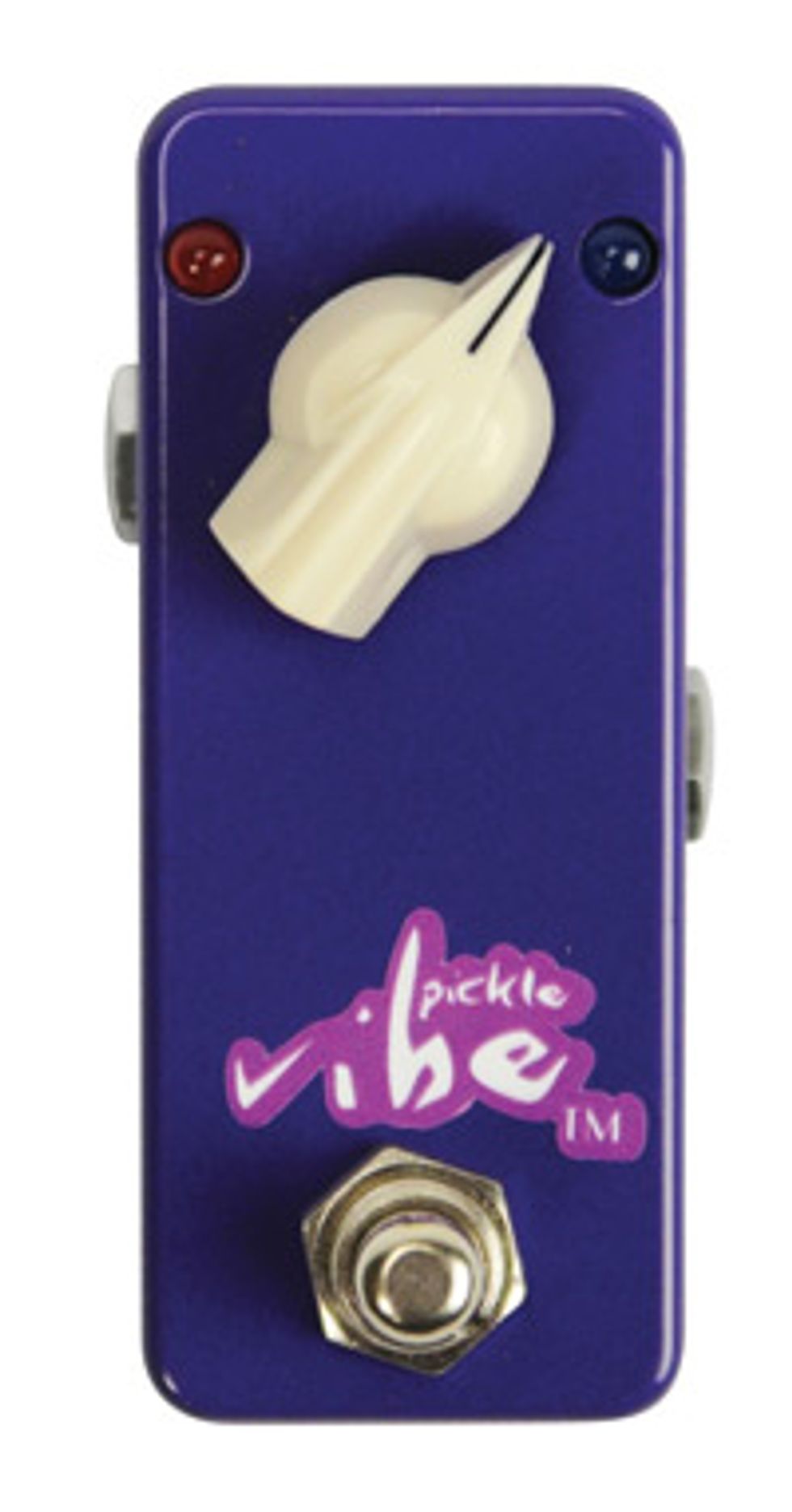 | |
| Download Example 1 | |
The Uni-Vibe is a classic effect, but unless
you perform in a Robin Trower tribute band,
you’re not likely to use this watery sound
more than a couple of times a night. So why
sacrifice a lot of pedalboard real estate to get
it? Slotting neatly between two existing pedals
on my board, the Pickle Vibe produced
huge, inspiring vibe tones.
As with the Babyface Tremolo, the pedal’s
single knob controls the rate. A blue LED
flashes the tempo of the vibe, while a
red one indicates the effect on/off status.
There’s a sensitivity trim pot inside, but
don’t bother unscrewing the back. I tried
other settings and none sounded as good
as the factory one.
The Final Mojo
As with most Uni-Vibe emulations, the
Pickle Vibe responded best between the
guitar and some sort of grit, whether
an overdrive pedal, the slightly broken
up Orange, or the lead channel on the
Egnater. According to Lovepedal, rather
than using an exact copy of the Uni-Vibe
circuit, the Pickle Vibe generates those
classic tones with a unique circuit. Clone
or not, from slow psychedelia to fast Leslie
blues, this pedal sounded so good it could
increase the number of times I go for the
vibe on any given night.
Buy if...
you want great-sounding vibrato effects in a tiny box—and at a great price.
Skip if...
you perform in a Robin Trower tribute band.
Rating...
Street $139 - Lovepedal Custom Effects - lovepedal.com |
Amp 50
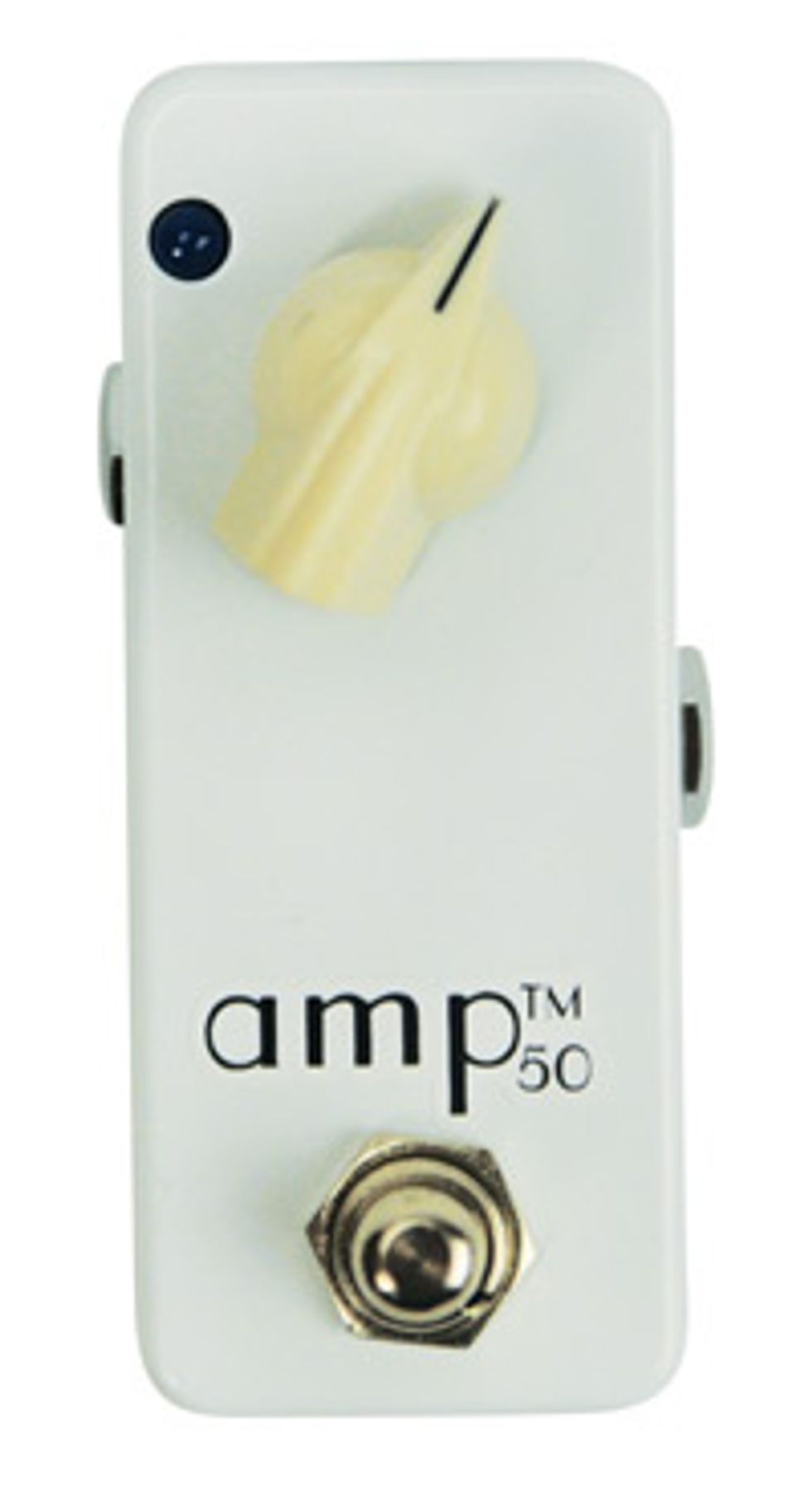 | |
| Download Example 1 | |
Sean Michael made his bones largely on his
“Church of Tone” pedal, the COT 50 Boost/
Overdrive. Lots of players agreed that it
nailed certain classic-rock sounds associated
with guitar icons like Jimi Hendrix and
Billy Gibbons. For the mini version, Michael
has modified his original design to afford
cleaner tones at the bottom of the gain/bias
sweep and dirtier tones at the top.
The Amp 50’s single knob adjusts the bias
of the circuit, which causes some noise
as you turn it. I found that, by putting a
volume pedal or a muting tuner after this
pedal, I could mute the noise—a good
thing, as I could see using a number of different
settings throughout a set.
With the gain/bias down all the way, the
Amp 50 added a buffer-like sparkle to the
clean sound of both the Tiny Terror and
Rebel 30. Between there and 12 o’clock,
a small amount of grit entered the equation—
more so when using the hot-humbucker
equipped Reverend than with my
Strat. From noon to 3 o’clock, the Amp 50
became more overdrive-like, adding sustain
to solos and crunch to rhythm chords. From
3 o’clock to full on, a fuzz effect started
creeping in. Turned fully clockwise, the control
produced a sound like an amp on the
verge of destruction (in the best sense).
The Amp 50 is all about response. In its
cleaner modes, it added a dynamic “give”
to what would otherwise be an unforgiving
clean amp tone. Backing off the guitar volume
at almost any setting cleaned up the
sound quickly. The pedal added a whole
array of British sounds to the Egnater’s
American-toned clean channel, while
interacting much like a classic treble booster
with the British-voiced Orange.
The Amp 50 also played nicely with other
overdrive pedals. It was no surprise that
it worked well in front of a Lovepedal
Kalamazoo, but it also matched up delightfully
with a Maxon OD-9, not only adding
sustain but injecting a new British character
to the tone. In either combination, the Amp
50 effectively turned my single-channel Tiny
Terror into a three-channel amp.
The Final Mojo
Given all the ways the Amp 50 can enhance
your sound without adding significantly to
your gear load—or subtracting much from
your pocketbook—it’s hard to imagine not
picking up one of these mini-monsters.
Buy if...
you want to give your sound a character- laden kick in the butt.
Skip if...
you have all the tones you need.
Rating...
Street $129 - Lovepedal Custom Effects - lovepedal.com |



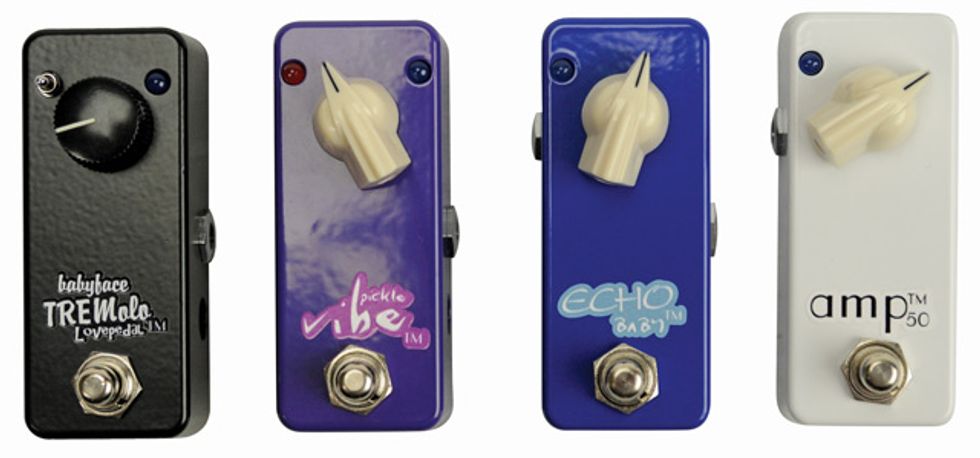




![Rig Rundown: Russian Circles’ Mike Sullivan [2025]](https://www.premierguitar.com/media-library/youtube.jpg?id=62303631&width=1245&height=700&quality=70&coordinates=0%2C0%2C0%2C0)


























